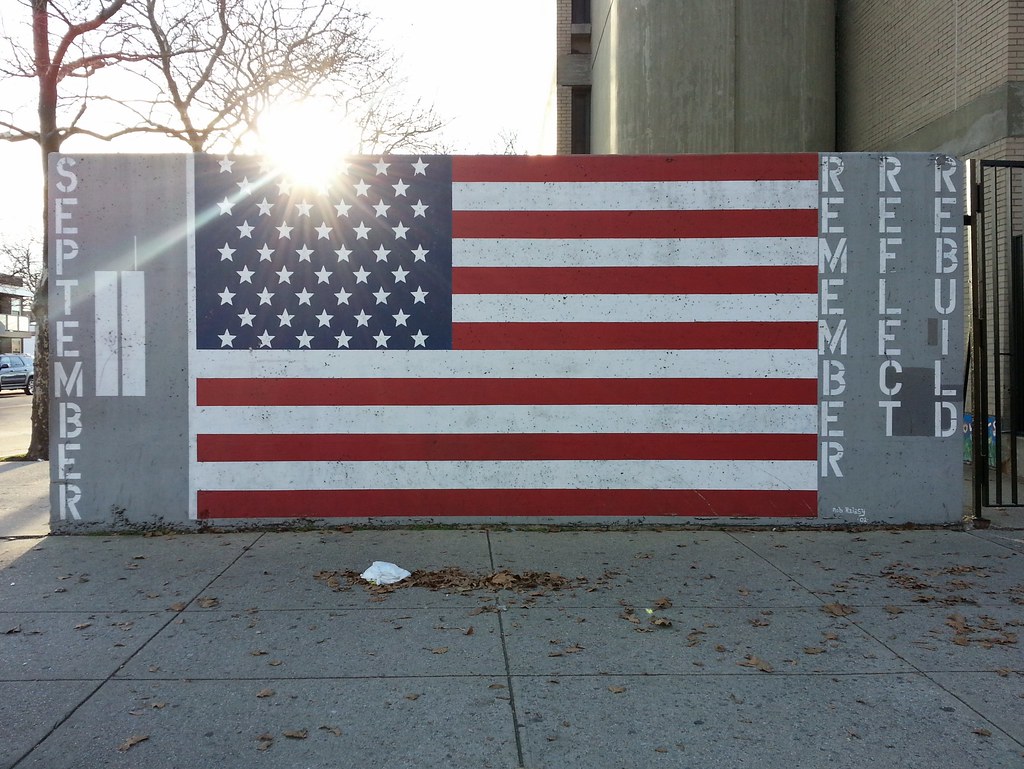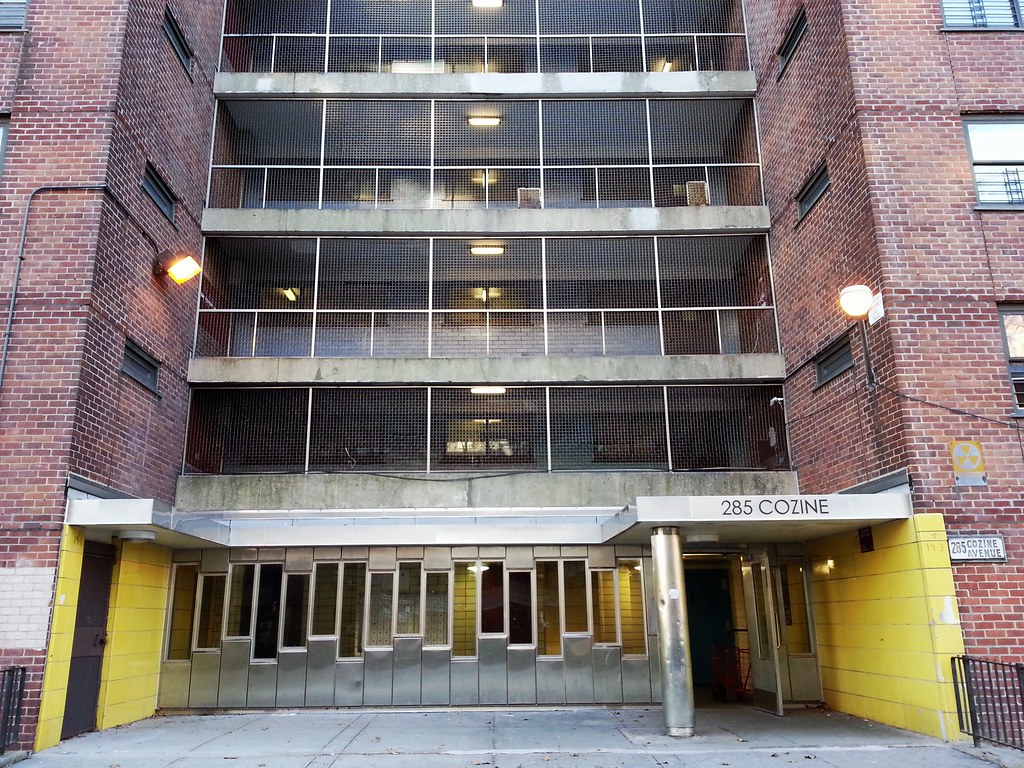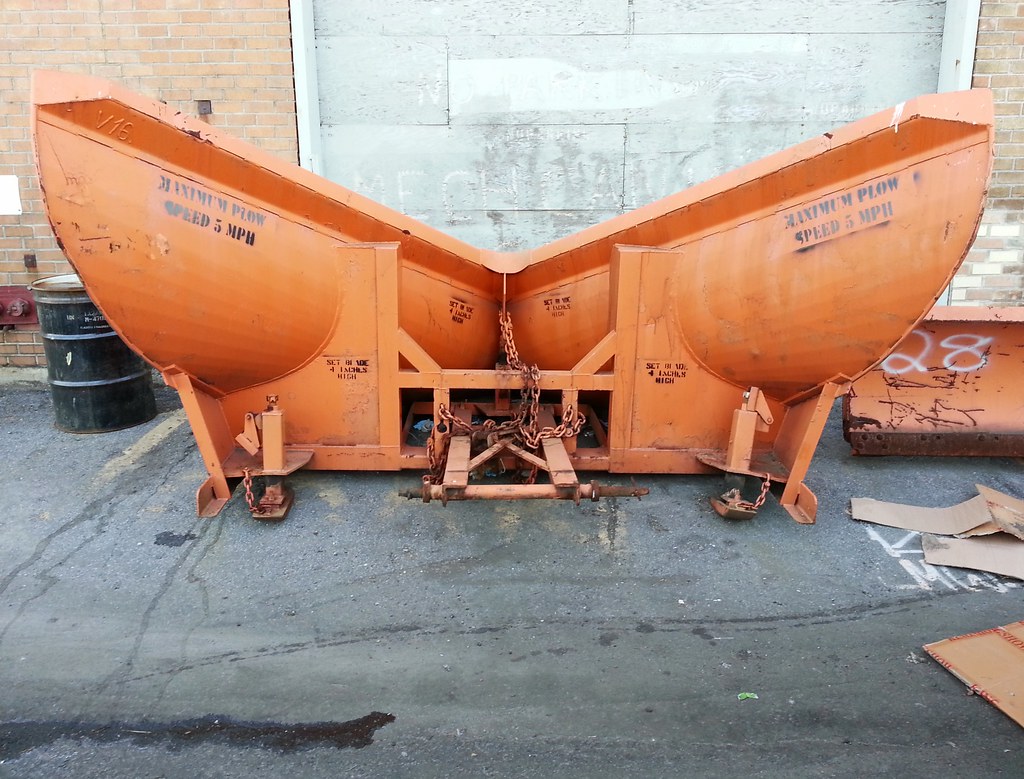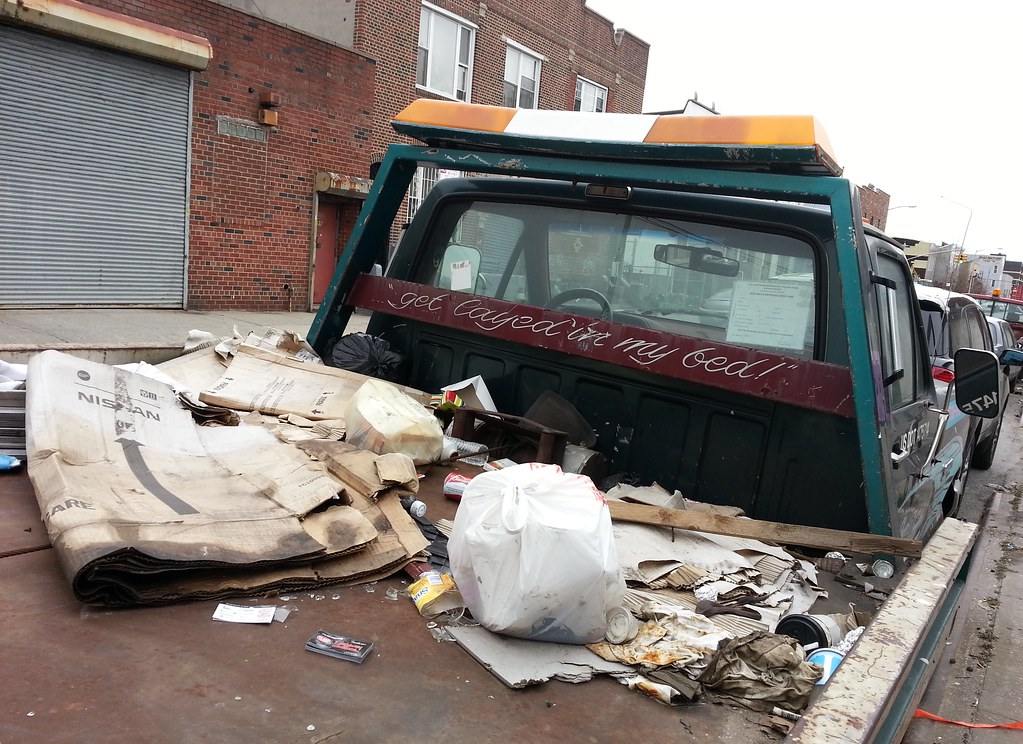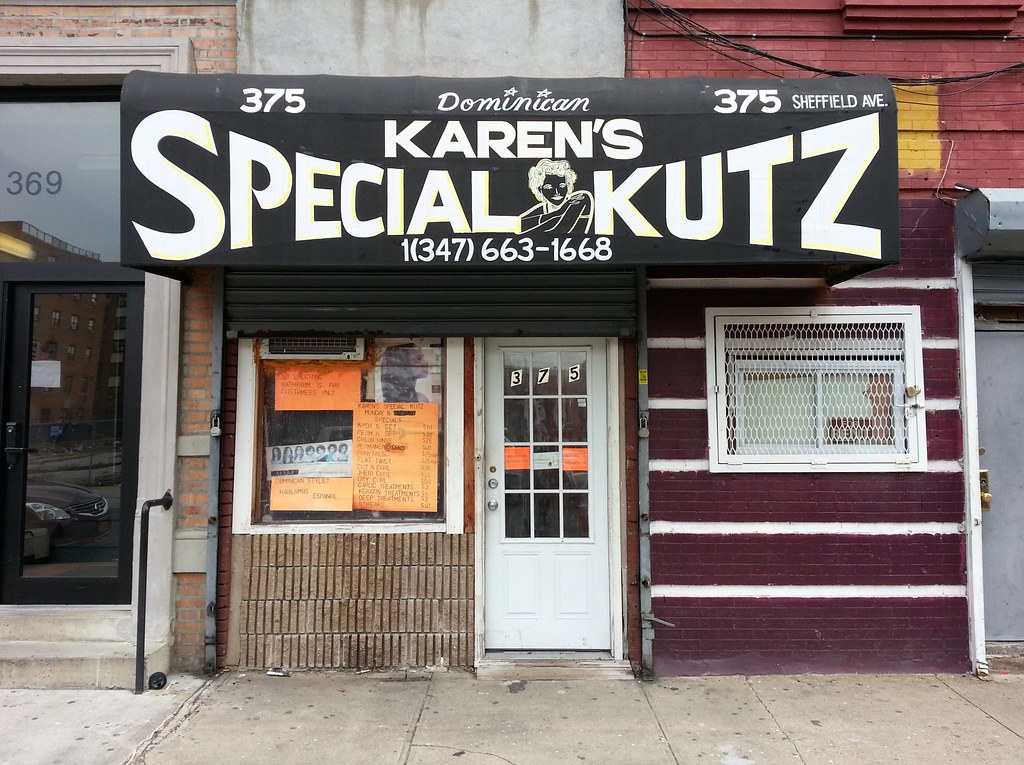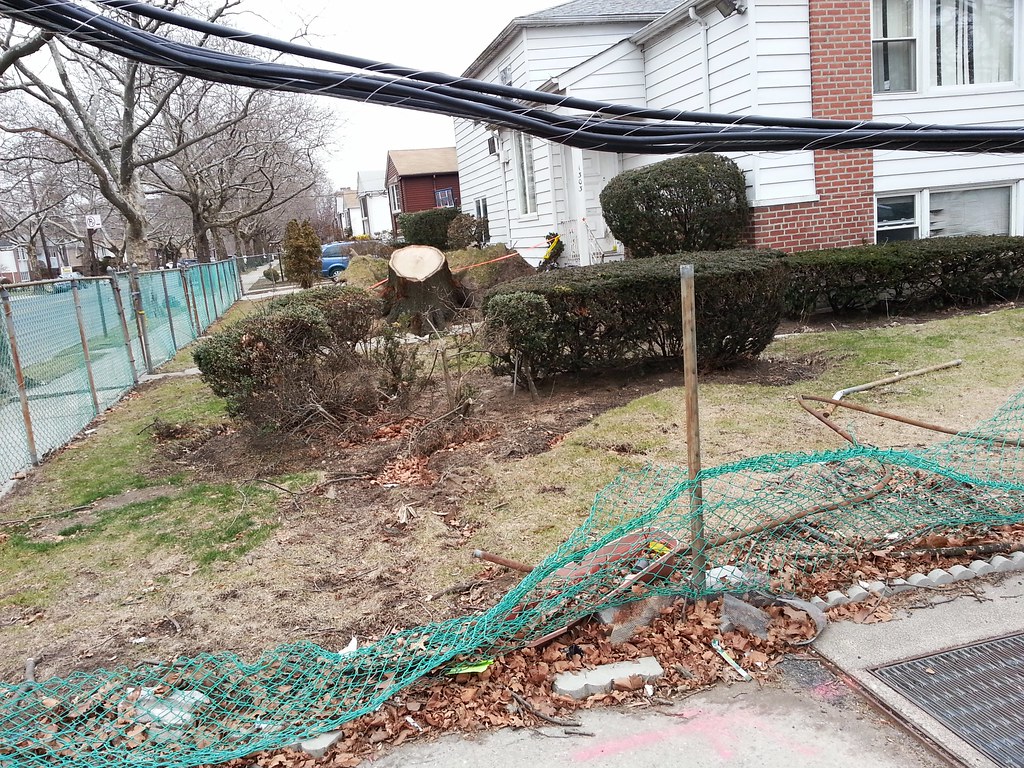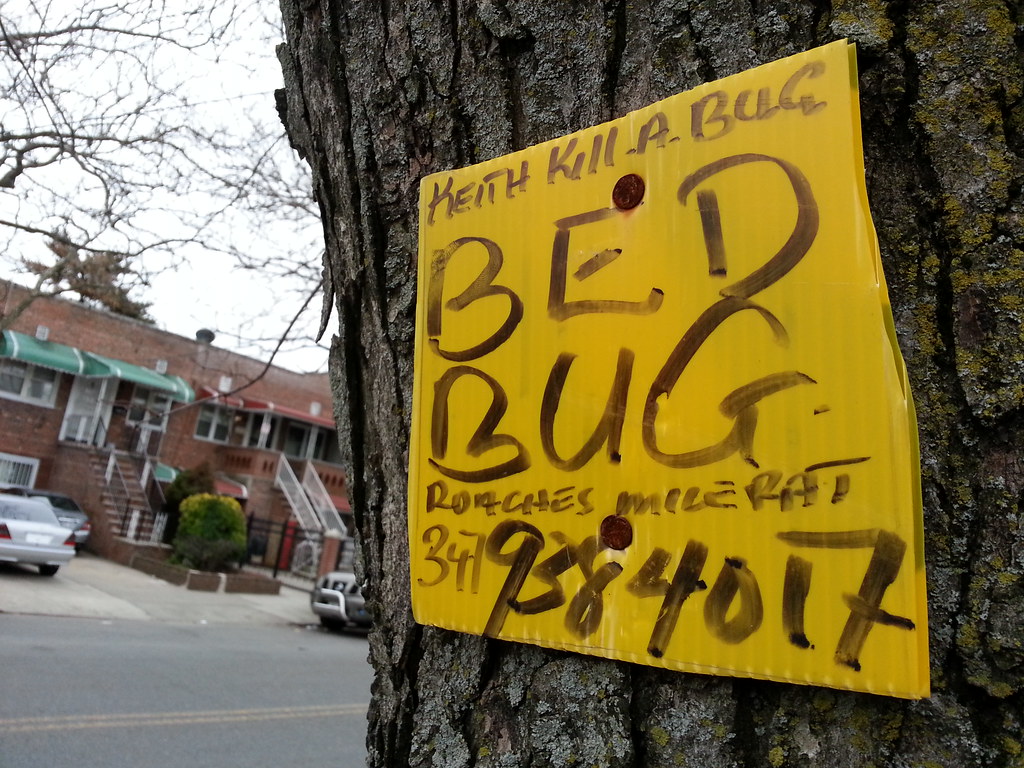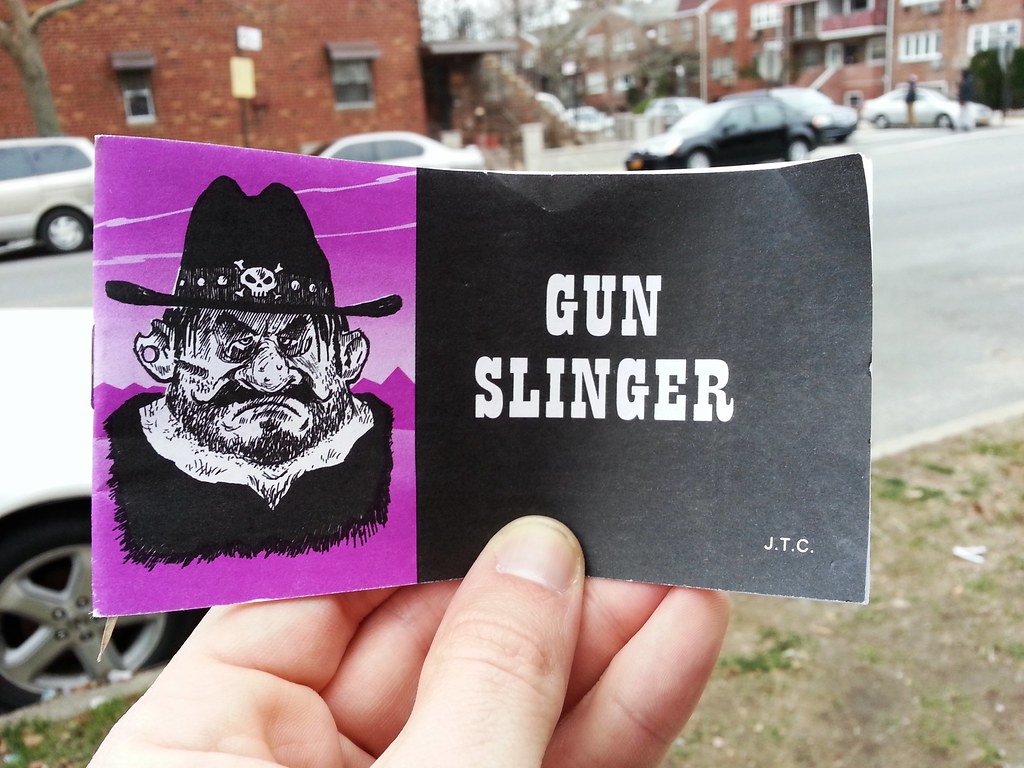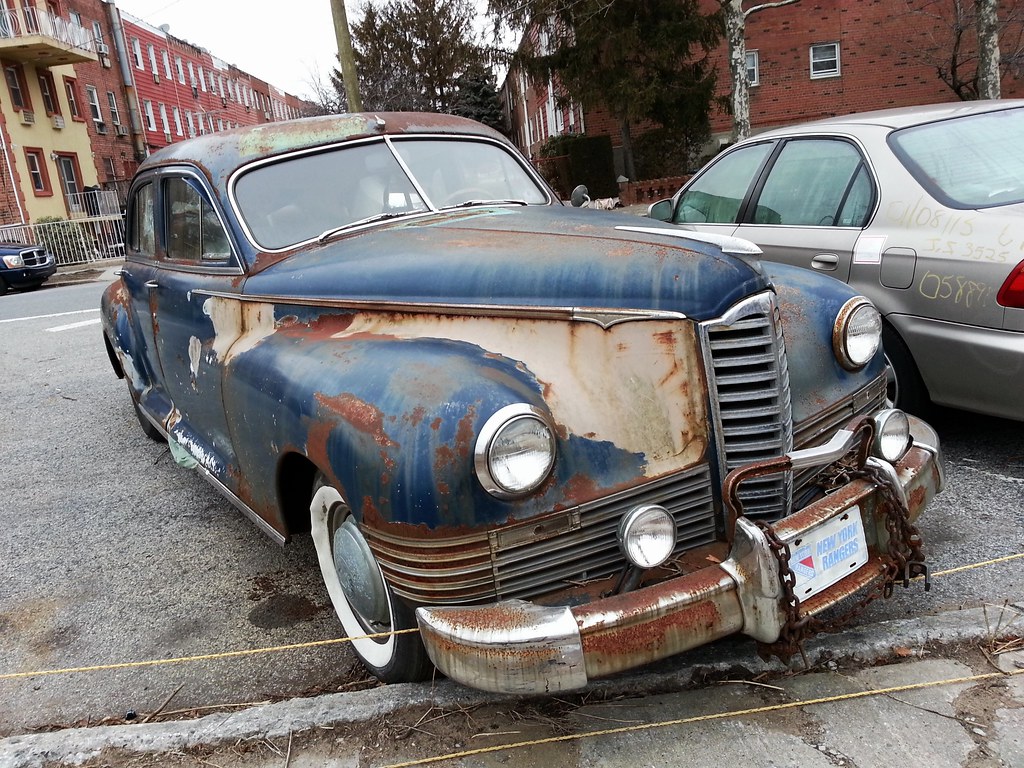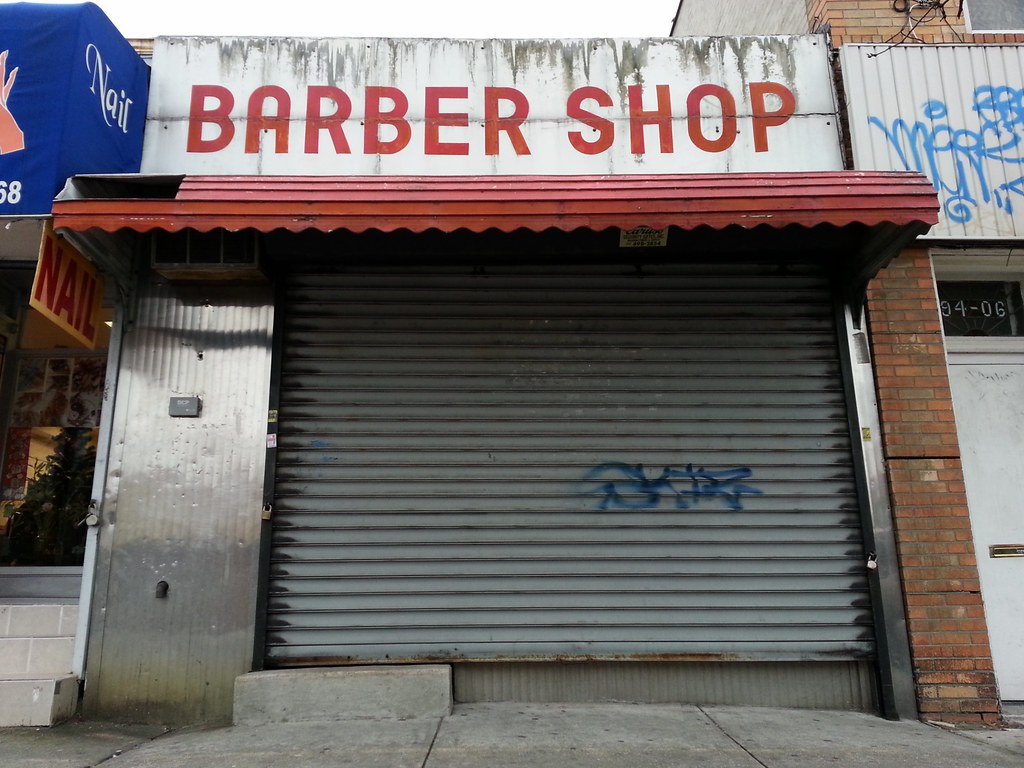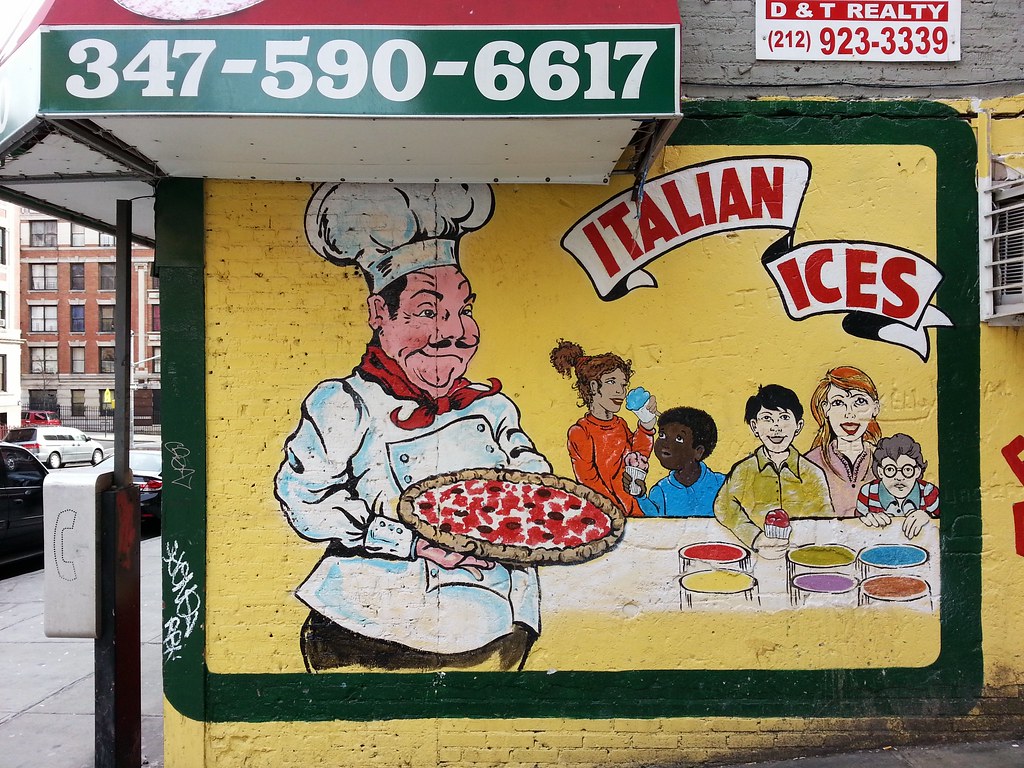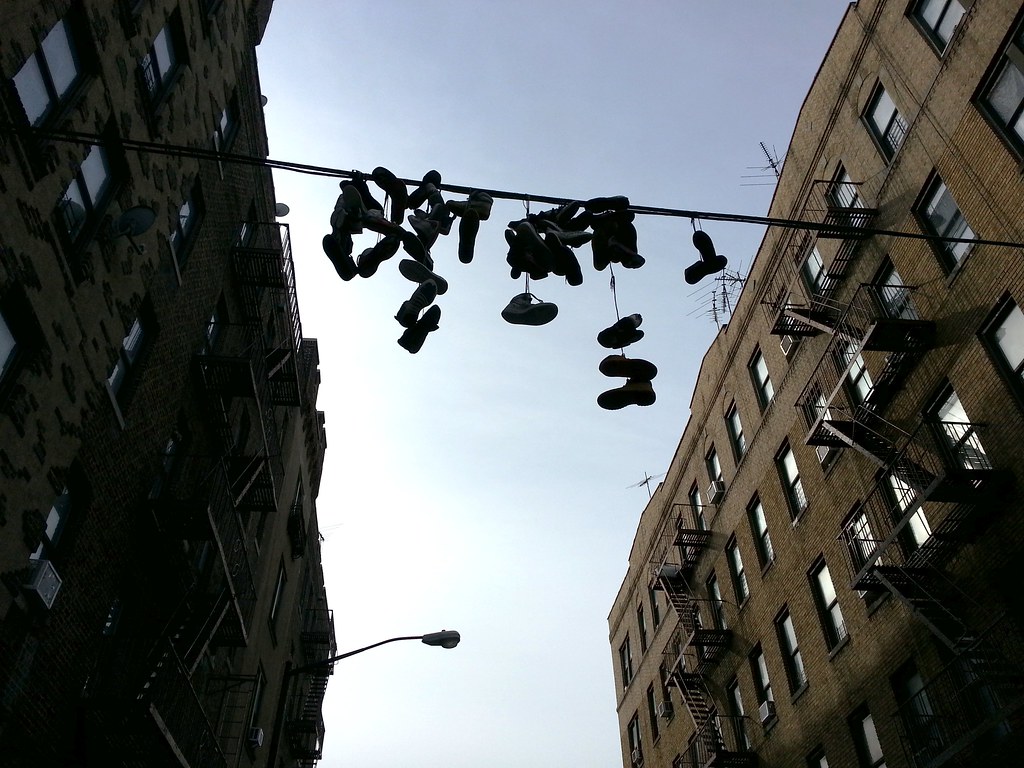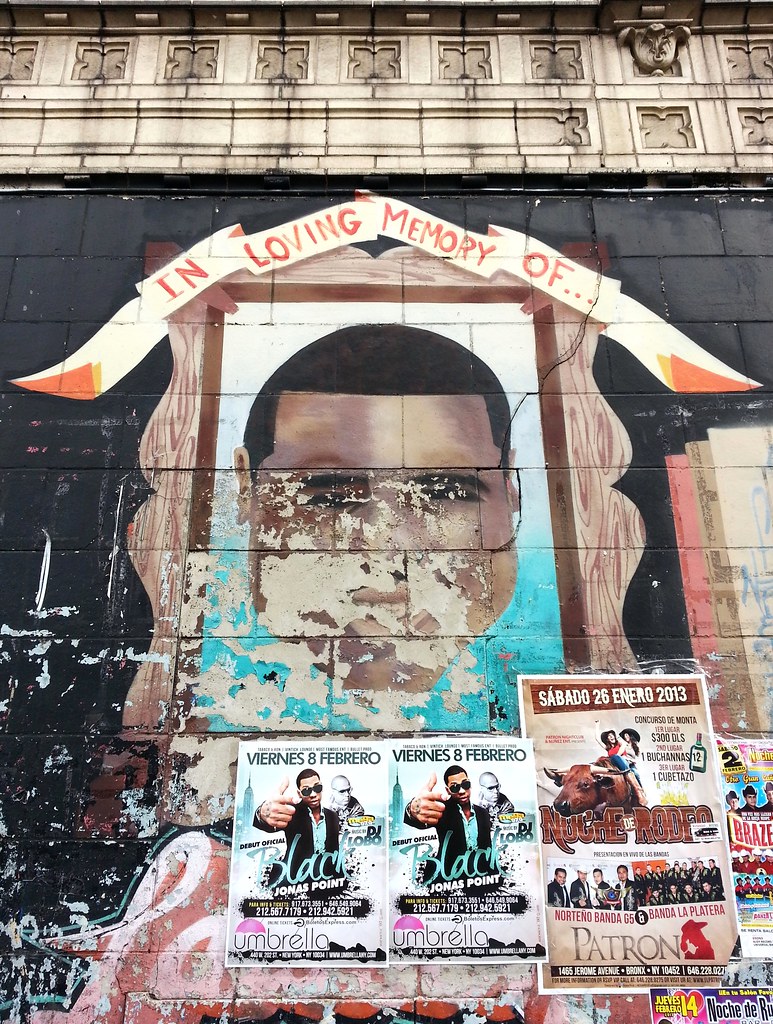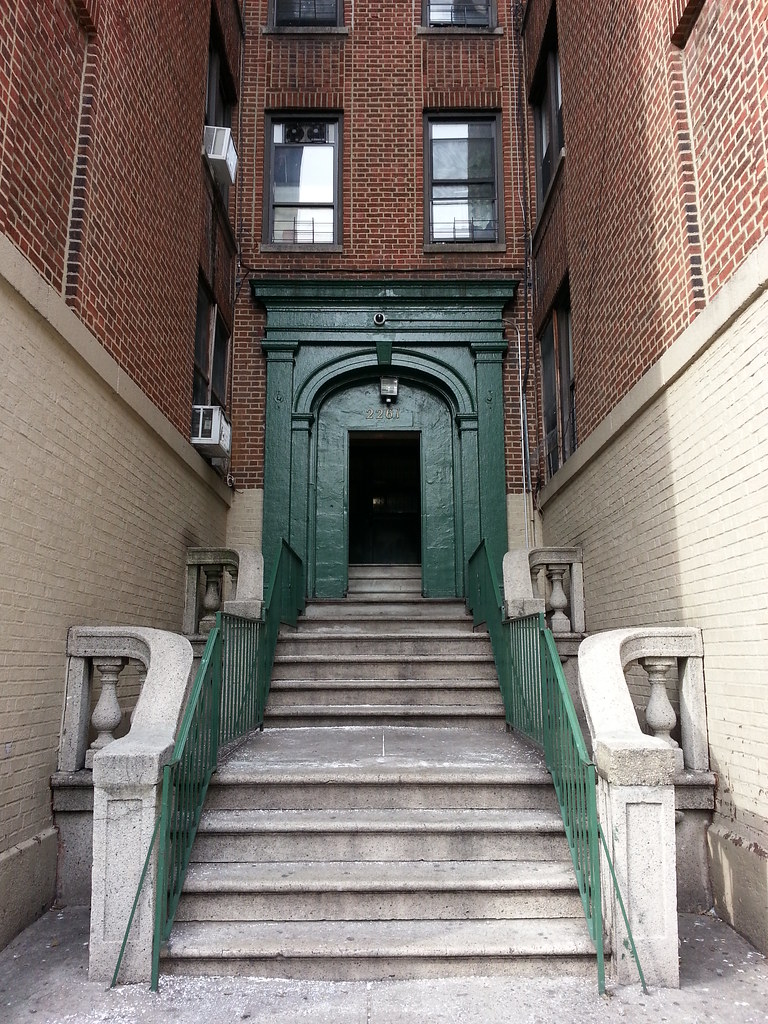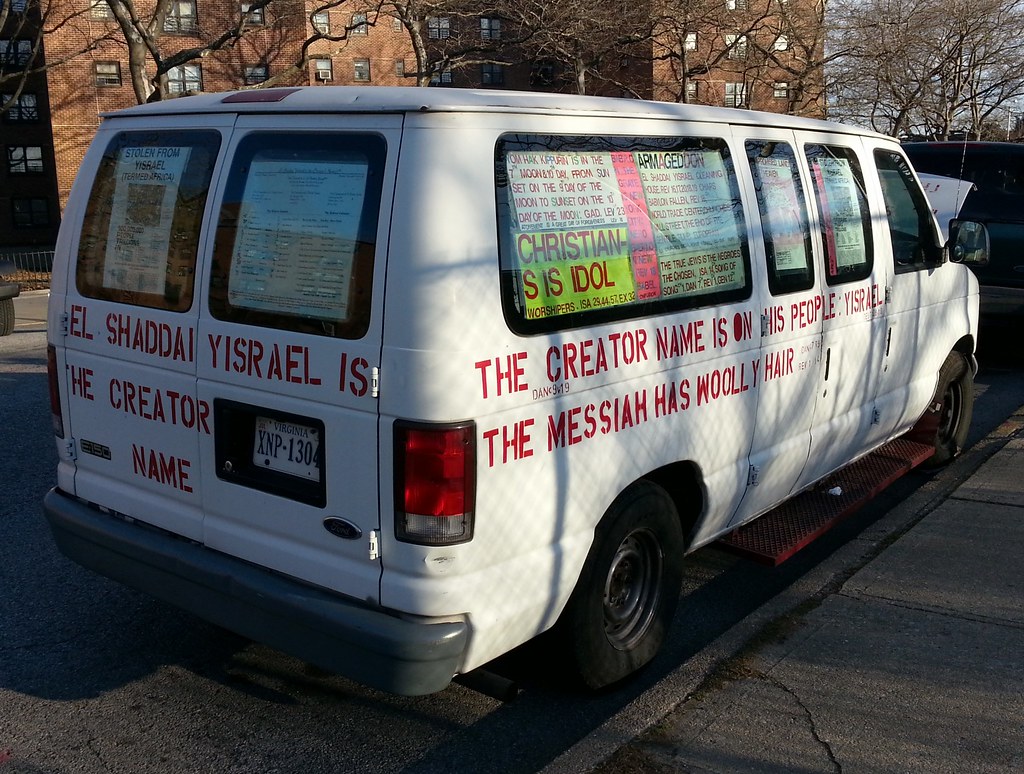
I'm not the first to notice this van around town. (Here's a closer look, in case you want to read some of the window signs.)

Emerging from the demise of the long-running Aqueduct Flea Market, which was evicted from its home of 30+ years — the parking lot of Aqueduct Racetrack — in late 2010 once construction commenced on the adjacent Resorts World Casino, the Aquaduck Flea Market occupies an entire square block in an industrial section of East New York.

This building is a remnant of the old East New York brewery that produced Piels beer from the late 1800s until 1973. Piels is probably best remembered for its Bert and Harry ad campaign from the 1950s — starring Bob and Ray, it was "among the first and one of the most celebrated attempts to use humor to sell a product on television", and the spots were so popular that newspapers would print schedules of when they'd be airing on TV — but I personally prefer this terrible Jimmy Breslin commercial from the late '70s, after the Piels name had been purchased by the Schaefer Brewing Company.

More than half of the city's school buses are out of commission during the ongoing strike by Local 1181 of the Amalgamated Transit Union. These picketers seemed less than enthusiastic about the cause, however. One guy with a megaphone was trying desperately to conjure up a lively show of union spirit, but to no avail:
"C'mon people, let's go! Just one time around the block! One time only! C'mon, let's go!"
Almost everyone totally ignored him and carried on with their conversations as if he weren't there. He eventually managed to convince a dozen other strikers to join him on a single, rather languid lap of the block. Let's take a look and a listen...
These striking transit union workers mean business! Wait, what's that they want? DVDs? And is someone squeezing a rubber ducky?
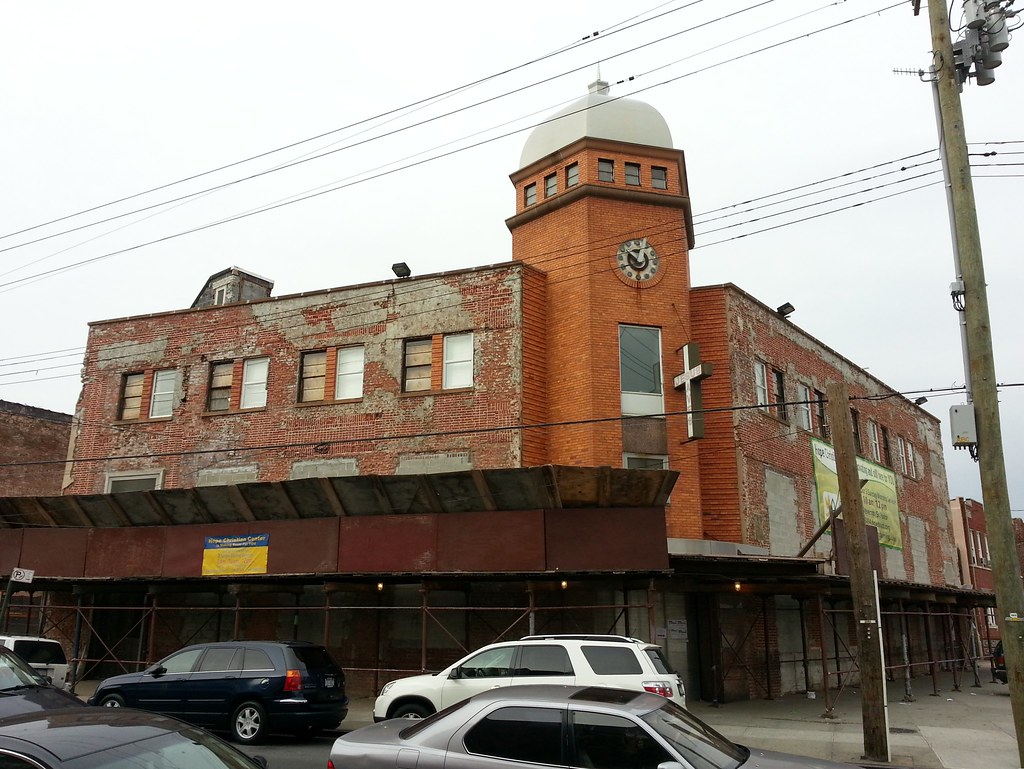
Here we have another bank turned church. The alley that runs around the back of the building still sports a sign that reads: "Entrance to Drive-In Bank".
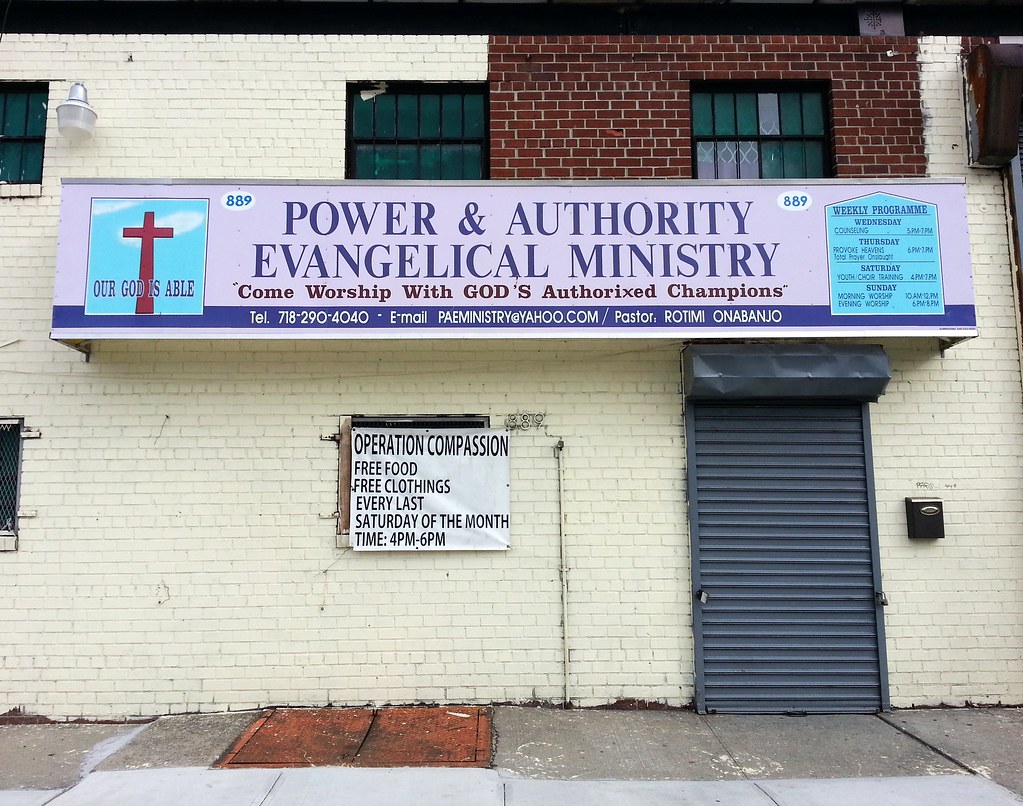
1) It's tough to see in the photo, even up close, but the fifth word on the third line looks like it used to be "Authorised". Someone apparently realized that's not the common American spelling and corrected it to read "Authorixed".
2) The "Weekly Programme" (continuing with the British-influenced spellings) lists "Total Prayer Onslaught" on the schedule for Thursday nights. Until I published this post, the words "Total", "Prayer", and "Onslaught" did not exist consecutively anywhere on the internet, at least not as far as Google could tell.
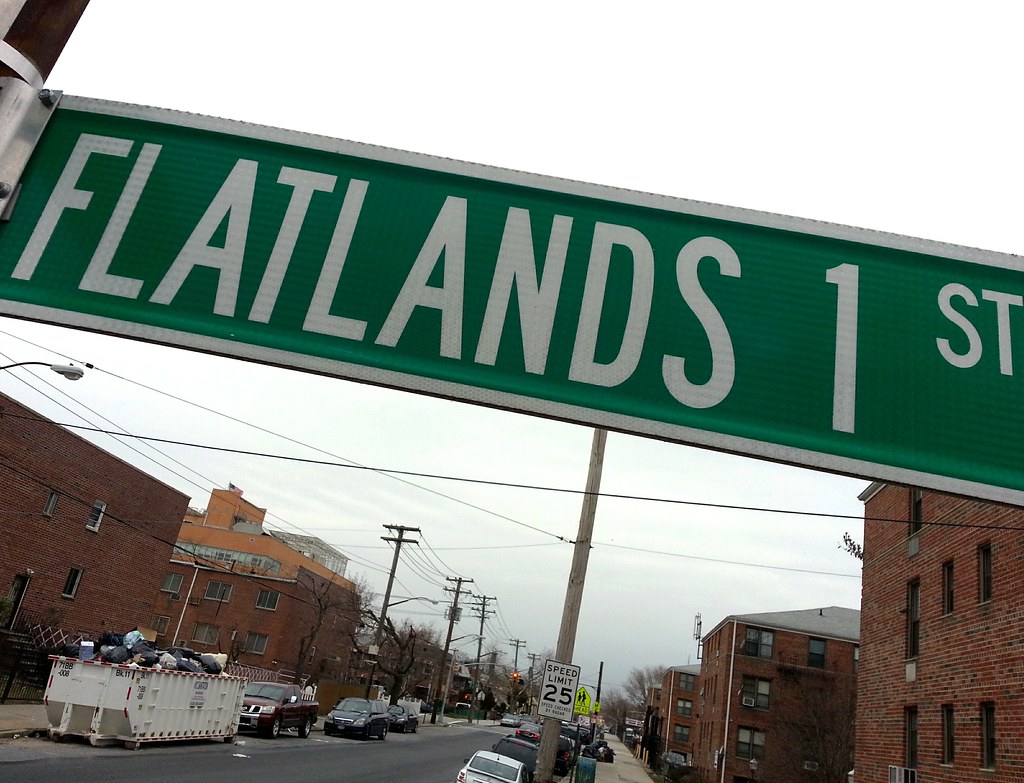
In addition to the plain numbers, Brooklyn has several other sets of numbered streets, each with its own unique prefix. Here we are at Flatlands 1st Street in Canarsie (the highest numbered street in this series is Flatlands 10th). The other prefixes in use are North, South, East, West, Bay, Brighton, Paerdegat, and Plumb.
UPDATE: Add one more prefix to the list: Banner!

Here we are on the Canarsie side of the "nature preserve" we saw from Starrett City yesterday.

Young Israel of Canarsie ain't lookin' so young anymore. The same can be said about most of Canarsie's fading Jewish population.

Post-Sandy house inspections on Flatlands 9th Street. A nearby resident told me that he and his neighbors all had to toss out everything that had been on the ground floor of their homes. Many of them were embarrassed by the hideous old furniture they had never gotten rid of, so, in order to keep people from seeing it, they would wait until they spotted the garbage truck coming before putting it out on the curb.
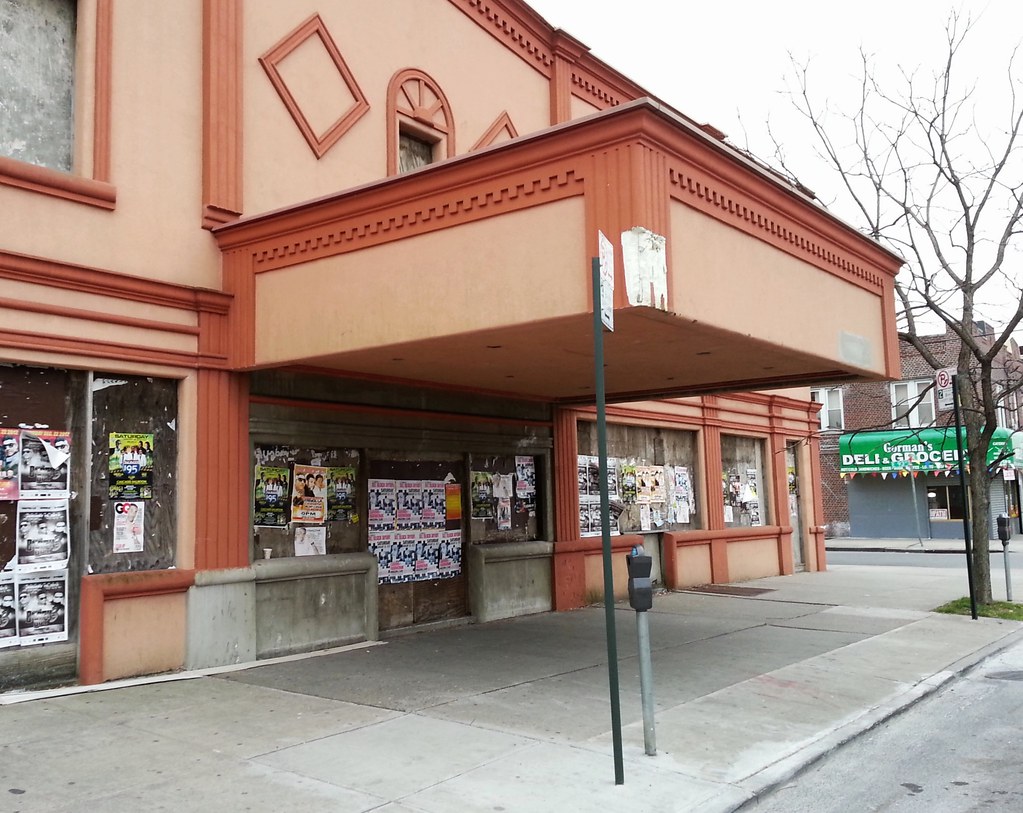
This former 1,470-seat theater has been a source of neighborhood frustration ever since it closed in early 2004. More than two years later, plans to turn it into a church had never materialized, the exterior was falling further into disrepair, and the marquee, frozen in time, still displayed the names of the final movies that ran here: Cheaper by the Dozen, My Baby's Daddy, Torque, and The Return of the King.
By late 2006, however, the owners had begun fixing up the place, intending to transform it into a restaurant and banquet hall. The Canarsie Courier ran a photo of the ongoing renovations, saying: "Work is still in progress, but, as is evident above, the soon-to-be banquet hall will finally make the former blight on the shopping strip a site of which we will be immensely proud."
Well, now it's more than six years later, and I'd have to imagine that any feelings of immense pride have vanished by this point. The exterior certainly looks better than it did, but the building is still boarded up without a trace of life. While there was talk of siting a new charter school here as recently as a year ago, there's no sign that anything has come of that proposal. But, hey, at least all the plywood gives local event promoters ample space to paste up their flyers!
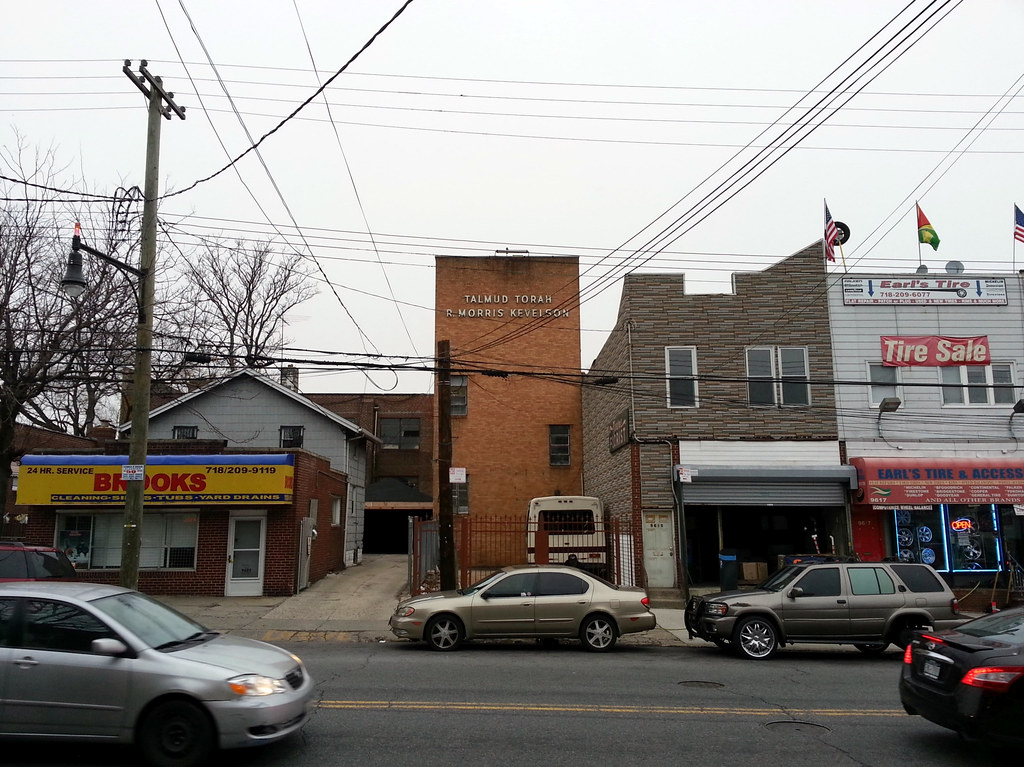
This shuttered synagogue is another reminder of Canarsie's disappearing Jewish community.

The borough's home of Prince Hall Freemasonry

This is one of two incredible gateways at PS 15/291 in the Bronx. (You can see them in their entirety here and here.) I have to admit: before today, I never realized that Colin Powell was possessed by the devil. Or that Helen Keller was related to Medusa.
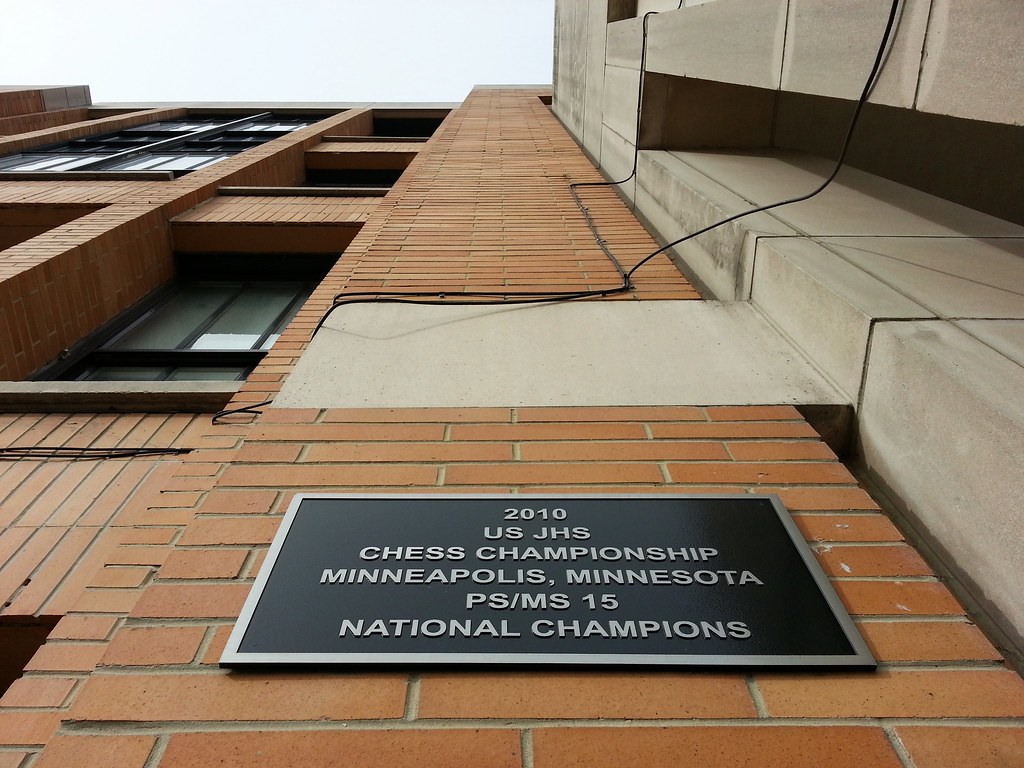
This was the school's second championship in five years.
Speaking of teenage Bronx chess players, a high school freshman named Justus Williams was ranked as the top 9th grader in the US at the most recent national championships. In a stereotype-shattering performance, his school, the little-known Bronx Center for Science and Mathematics (not to be confused with the famous Bronx Science), located in what's said to be America's poorest congressional district and fielding a team of kids all raised by single parents, won the 12th-grade championship as well. Back in 2010, when he was 12 years old, Justus became the youngest black chess master in history. A year later, there were only thirteen chess masters in the country under the age of 14, and three of them (all of whom achieved the title before turning 13) were African-Americans from the NYC metro area.
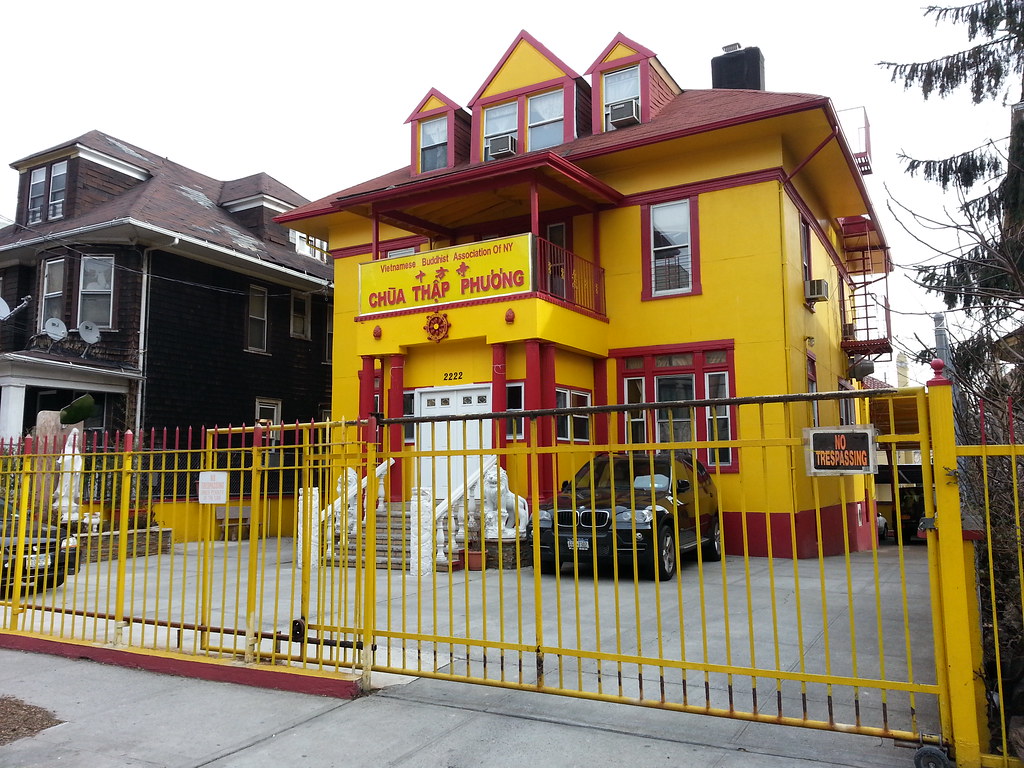
Here's a video of Tết (Vietnamese New Year) celebrations inside the temple, which serves the Bronx's growing Vietnamese population. (As we saw last year, there's also a Cambodian Buddhist temple not too far away — and, more memorably, another one in Brooklyn.)
Hey, somebody else showed up! (He's talking on the phone, in case you can't tell.)

Curving around the back half of the Gould Memorial Library, it's America's first hall of fame! That's Mr. Dime in the lower right, FYI.
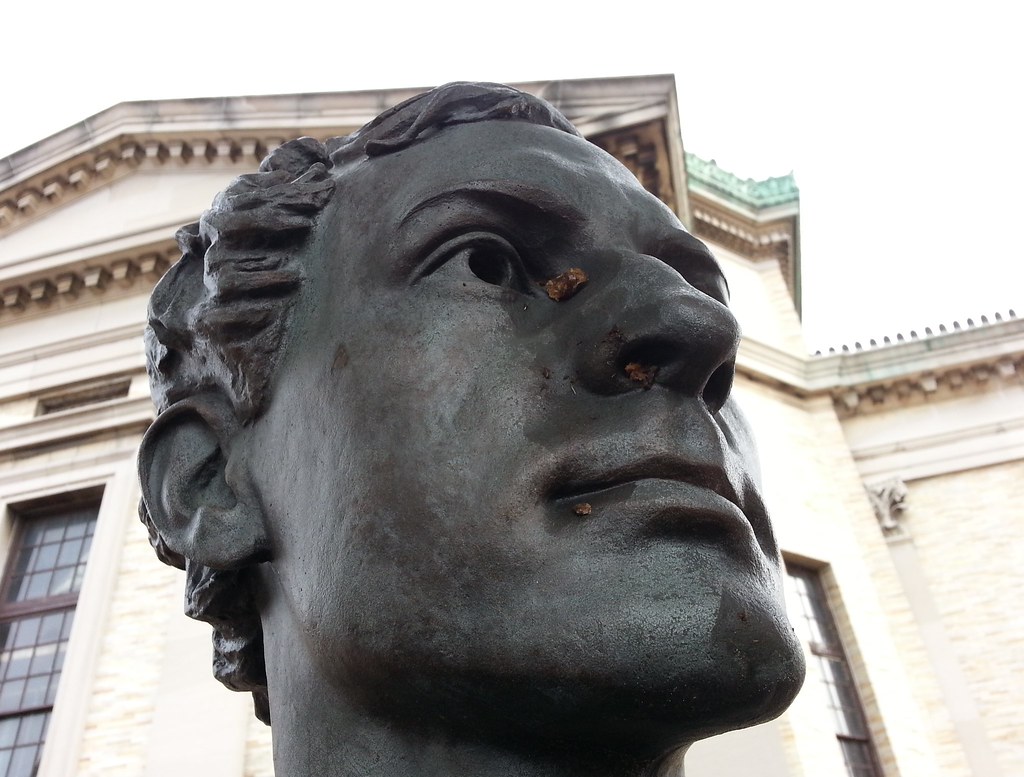
Not long before his brother shot Abraham Lincoln, this renowned 19th-century actor saved the president's son, Robert, from being seriously injured or killed when he fell between a moving train and the platform at a station in Jersey City.
No, I don't know what's on his face either.

From left to right, we have the Hall of Languages, the colonnaded Hall of Fame walkway, and the Gould Memorial Library, all designed by famed architect and champion moustache wearer Stanford White (whose scandalous 1906 murder resulted in the first so-called "trial of the century"*) and built around the turn of the 20th century as part of the original quadrangle of New York University's uptown University Heights campus (which is now Bronx Community College).
Providing a stark contrast to White's neo-Classical works, Marcel Breuer added five new Brutalist structures to the grounds in the 1960s, including Community Hall, which is serving as the mirror in this photograph. (The "Colston Hall" label on that green-and-white sign to the right refers to the much larger building standing behind this one; the two are linked by a pair of concrete sky bridges).
* What made it the trial of the century? The journalist Irvin S. Cobb put it this way:
"You see, it had in it wealth, degeneracy, rich old wasters, delectable young chorus girls and adolescent artists' models; the behind-the-scenes of Theatredom and the Underworld, and the Great White Way. . . . the abnormal pastimes and weird orgies of overly aesthetic artists and jaded debauchees. In the cast of the motley show were Bowery toughs, Harlem gangsters, Tenderloin panderers, Broadway leading men, Fifth Avenue clubmen, Wall Street manipulators, uptown voluptuaries and downtown thugs."
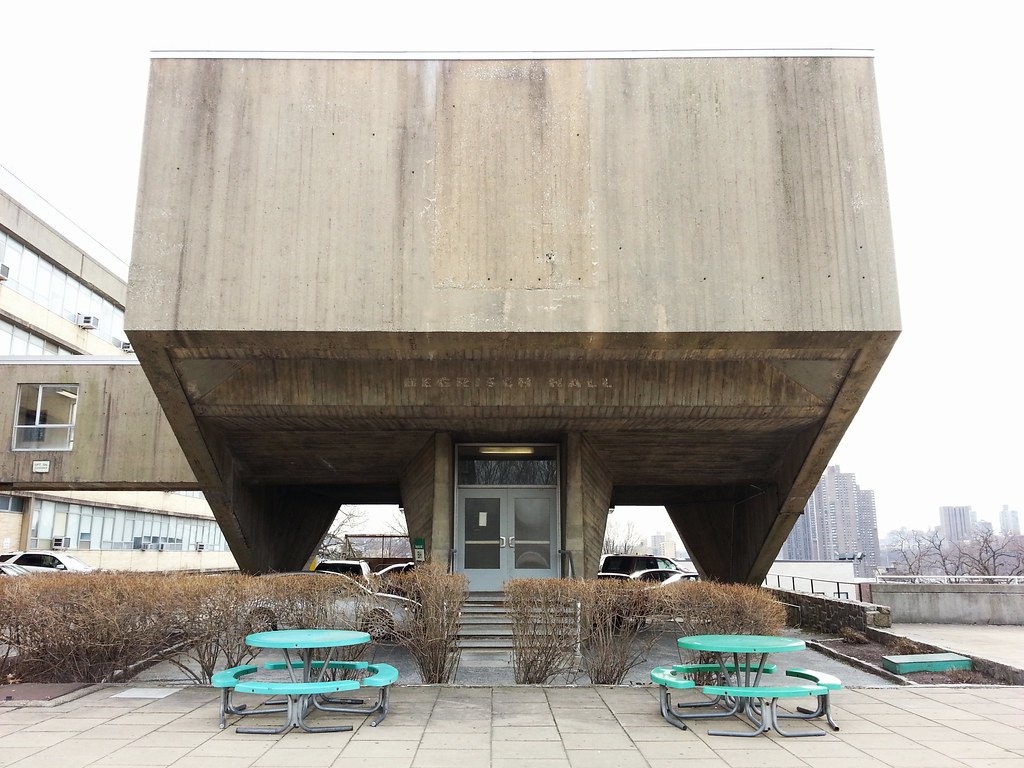
Another one of Breuer's Brutalist creations, Begrisch Hall "is a wedge of concrete balanced on its skinniest edge . . . It looks as if it could be tipped over in a prank." Here's a view from behind.

